Water is life in many forms. Because of that, humans stopped roaming tens of thousands of years ago to settle near sources of water. From Mesopotamia to Budapest, Ho Chi Minh City, Montréal, New Orleans, New York, and Paris, humans have always lived near water. Obviously, that includes Cuenca, Ecuador.
I will share some highlights I have learned about Cuenca’s famous 4 rivers along with what you might look for as you tour them yourself. If you’re after a guided experience, we also provide details for a quality guide that provides tours of Cuenca’s rivers with a focus on trees & birds. For a slightly different vantage point, check out this article on exploring Cuenca’s rivers by bicycle.
Here we go!
“Water is the soul of the Earth.” ~W.H. Auden
For many reasons, the quote from the 20th century poet rings true. Everyone wants to be near a river. In the 1990s, a survey in Raleigh, North Carolina asked its citizenry for what they wished the city had. The number-one answer? A river flowing through it. The nearest river was north of the city with no amenities.
Cuenca pretty much has every city in the world beat with the Tomebamba River, Yanuncay River, Tarqui River, and Machángara River. For those who do not know, the official name of Cuenca in English is “Santa Ana of the Four Rivers of Cuenca.” But almost everyone just calls it, Cuenca. It is certainly a lot easier to say.
“If there is magic on this planet, it is contained in water.” ~Loren Eiseley
The American anthropologist, educator, philosopher, and natural science writer could have easily been talking about Cuenca as it is certainly centered around “magic.” It starts with the clouds over the nearby Cajas mountains. Cerro Arquitectos (Architects Hill), peaks at 4,450 meters / 14,600 feet above sea level.
Drinking Water Filtered by the Cajas Mountains
Though it looks intimidating with its volcanic rock peaks, the Cajas is like a gigantic sponge. The volcanic soil on top of the rocky surface absorbs much of the water that falls from the sky. Once saturated, the water heads towards Cuenca.
The mountain water is naturally filtered by the volcanic soil, which purifies and enhances it with a blend of life-sustaining minerals while keeping harmful contaminants away.
Every drop of water that the spongy ground releases gets bigger and bigger as it goes down the mountains. The water drops eventually become a small stream above the tree line in the Cajas. As it collects more water, the small stream finally reaches the first plants on its way down the mountains.
The filtered water is clean and crystal clear. This refreshing and tasty water is so good that one can drink it straight out of the tap. Cuenca is blessed as being one of the few places in Ecuador where bottled water is not necessary.
To some expats, the water in Cuenca reminds them of the great tap water enjoyed in Seattle and western Washington.
El Río Tomebamba
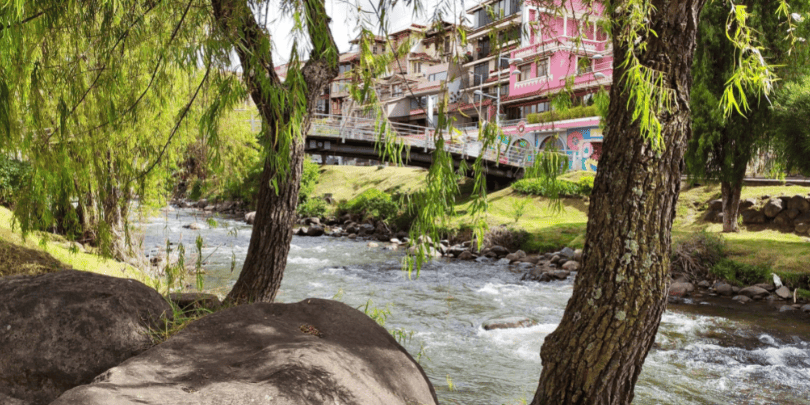
“El Río Tomebamba is my favorite river.” ~Reni Garcia Figueroa
How that water makes it way down and through the Cajas to where 660,000 people live is an amazing journey. A good portion of the water makes its way to Laguna Toreadora and other lakes, in the middle of Cajas National Park. The Cajas has more than a thousand bodies of water (You read that number correctly).
From there, it snakes its way towards the huge valley below and its 300 square kilometers / 115 square miles watershed. Just west of Cuenca, it is large enough that it is officially called the Tomebamba River. The name Tomebamba comes from the Kichwa word Tumipamba, where Tumi is a tree, and pamba means field.
Cuencano, Reni Garcia Figueroa, is partial to this river as her family is building a place for all its members to live right next to the Tomebamba on the west side of Cuenca.
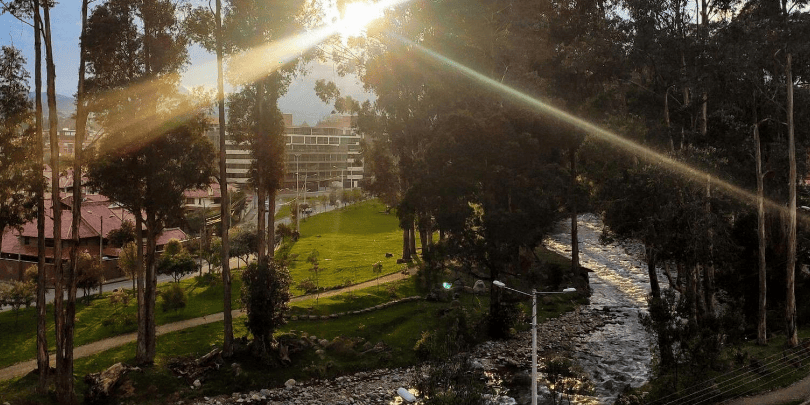
Despite being the shortest of the city’s four rivers at 23 km. / 14 miles in length, the Tomebamba is certainly the most photographed river in Cuenca. One reason is that it flows right through “Gringolandia,” the unofficial name for the western side of the city where many high-rise residences are located. While many think the name is due to the high number of Gringos in that part of the city, Cuencanos have said it is due to the high number of high-rise residences which reminds them of Miami.
Eucalyptus Trees
This river is lined with Eucalyptus trees. How it got to Cuenca is not exactly known as this very tall tree is endemic to southeastern Australia and Tasmania. The Eucalyptus trees have been widely introduced and planted in many countries because of its high adaptability and multiple uses.
Eucalyptus trees introduced from Australia in the 1800s supplied the Sierra (mountain region of Ecuador) with fuel and construction material. It also helped prevent soil erosion from previous logging.
This tree can tower everything as it sometimes tops out at 90 meters / 300 feet. It has smooth bark, sometimes with rough bark near the base, lance-shaped to curved adult leaves, flower buds in groups of three or seven, white flowers and cup-shaped or hemispherical fruit.
Its bark is intriguing as it looks like paper from a distance but is a lot firmer… more like heavy duty cardboard. Many trees look like someone tried to shred it. Colors abound with the tree as there are all sorts of reds and browns making up this beautiful tree.
The city has cut down some trees lining the rivers of Cuenca. Each Eucalyptus tree sucks about 20 to 40 liters / five to 10 gallons of water out of the ground every day. Over the past 15 years, some stretches of the Nagsiche River, in Cotopaxi province, have seen the water flow decreased by 40 percent, according to information provided by the National Water Secretariat of Ecuador (SENAGUA). Figures for Cuenca’s rivers have not been posted online.
The river provides a natural and beautiful separation between Cuenca’s historic district, El Centro, and the newer part of the city to the south. It has always been part of the city.
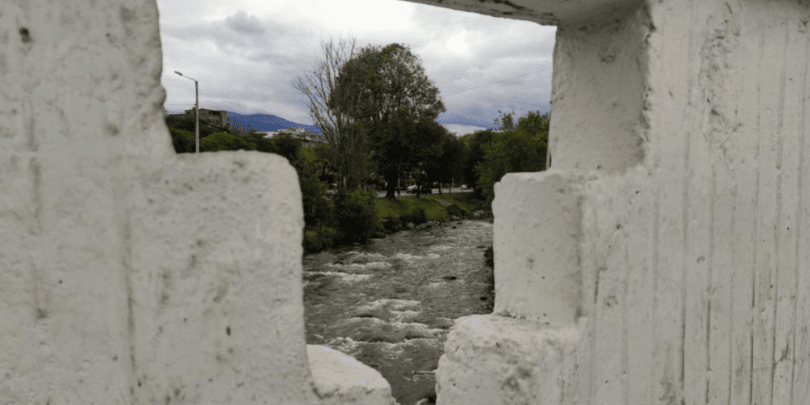
The “Broken Bridge” Story
Though placid and peaceful most of the time, the Tomebamba has been a raging and angry river. Puente Roto (“Broken Bridge”) is proof of the Tomebamba’s destructive powers.
One hundred meters / 300 feet downstream from Iglesia de Todos Santos, construction began on the arched stone bridge in 1849 and completed the next year. The bridge spanned the river for exactly a century.
It is not clear as to what exactly happened on April 3, 1950. Experts think a landslide in the Cajas mountains blocked the riverbed and created a reservoir of at least five million cubic meters / 1.3 billion gallons of water.
To put that into perspective, prior to the drought in the southwestern United States, the Colorado River Aqueduct delivered 1 billion gallons of water per day to southern California.
The massive amount of water overflowed the dam caused by the landslide and swept away everything in its path down to the city below. The Tomebamba River was a wall of water. It caused the destruction of homes and crops as the current carried huge boulders, stones, trees, animals, and possibly humans.
This unprecedented amount of water took out 15 bridges, including El Vado, El Vergel, and Todos Santos. The El Vado bridge was built by the Italian architect Martín Pietri between 1811 and 1813, and the Todos Santos bridge was commissioned by the government of President Vicente Rocafuerte. For whatever reason, the El Centenario bridge and Mariano Moreno bridge withstood the colossal flood.
Instead of rebuilding or demolishing the remains of Puente Roto, it was left as a memorial to that destructive day. You can walk across the remains of the bridge which is now more like a mirador overlooking the river. Broken Bridge is structurally sound for one to pass under it in a car or on foot on Paseo 3 de Noviembre.
Puente Roto is a popular place for visitors. It is a Top-Twenty place to visit on TripAdvisor, the world’s largest travel guidance platform. At various times of the year, the area around the broken bridge hosts festival gatherings.
The Tomebamba changes its name when it merges with the Machángara River, on the east side of the city, to become the Cuenca River. Just a short ways downstream, where the Cuenca River joins the Santa Bárbara River, it becomes the Paute River. And further downstream, the river changes its name again.
Eventually, all this water makes its way to the Amazon River and the Atlantic Ocean. Though accurate, it is wild to think that despite Cuenca being only 130 kilometers / 80 miles from the Pacific Ocean (as the Andean Condor flies), the water of the Tomebamba ends up in the Atlantic Ocean, which is about 2,700 kilometers / 1,700 miles away.
The Yanuncay
“A river seems a magic thing. A magic, moving, living part of the very earth itself.” ~Laura Gilpin
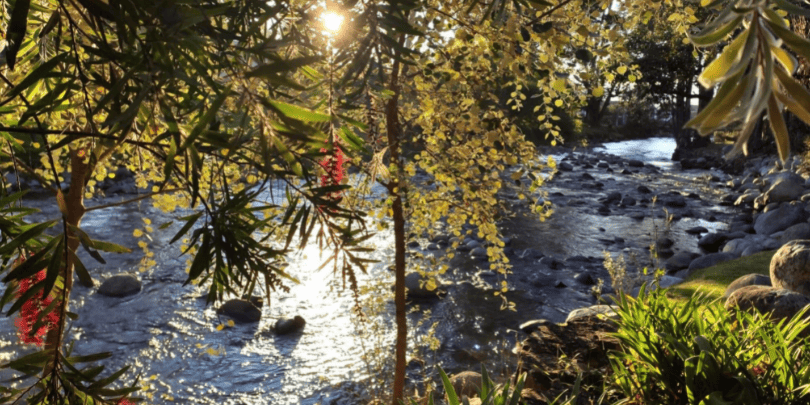
Parks Along the Rivers Offer Spiritual Contentment
Because Cuenca believes in green spaces for all to enjoy, residents have what are called “Parque Lineal.” It is what you think: “Linear Park.” In 2021, expats in Cuenca were asked in an unofficial poll what their favorite walk was that is not in historic El Centro. Parque Lineal Yanuncay was the clear winner.
Starting on the east side at Tres Puentes (“Three Bridges”), a tree-lined pedestrian dirt walkway follows the many curves of the Yanuncay River. It officially ends at Av. Loja, but one can walk further west, past Av. de las Américas.
There are many places to sit alongside the river and pass the time away. You will find families having picnics at the river’s banks. On higher ground in the river park, it is not unusual for there be a game of fútbol (soccer) or ecuavóley (three-man volleyball teams). Weekends are a very popular time to be at Parque Lineal Yanuncay. It is definitely a slower pace of life here than the United States and Canada.
To avoid traffic on the major streets in the city, the pedestrian walkway goes under the city’s bridges. It gives one an interesting perspective of our rivers, especially at Puente Felipe II. The bridge’s archway gives you an idea of how big some of those boulders are. And these are by far not the biggest along the banks of the Yanuncay.
Water is a very powerful force, and it never ceases to amaze many expats as to how it has carried boulders that weigh hundreds of pounds downstream. It is such a powerful force that Cuenca is lit by hydroelectricity… a form of renewable energy.
At 43 kilometers / 27 miles in length, the Yanuncay is probably the second most photographed river in Cuenca. Just like the Tomebamba, its headwaters are in the Cajas mountains.
On the south side of the city and very near the University of Azuay, it merges with the Tarqui River on the eastern edge of Jardín Botánico de Cuenca (Botanical Garden of Cuenca). Residents of the barrio (neighborhood), La Isla, call the 21 hectares / 52 acres garden their neighborhood park though it is definitely a park for all in the city to enjoy.
A pedestrian bridge connects the north side of the Yanuncay River to La Isla and the botanical garden. Another bridge, in the botanical garden, follows the Yanuncay for a while before it crosses the Tarqui River. Bridges are an integral and beautiful part of this garden oasis.
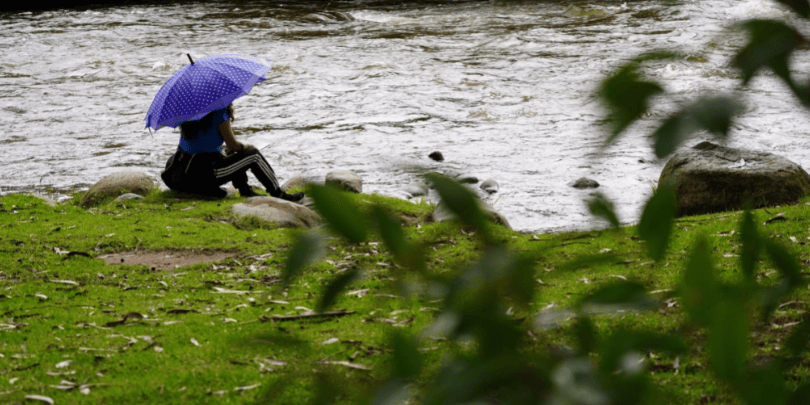
Cuenca’s Rivers Make for Serene Parklands
In August 2018, under the leadership of Mayor Marcelo Cabrera, the city signed the contract for constructing this gorgeous and magnificent park at the eastern end of La Isla. Cuenca invested $3.2 million for this botanical park that is dedicated to “environmental knowledge, so the project will help the population increase their responsibility towards the environment, in the area of responsible management of natural resources such as water and soil.“
At the entrance, a marshland has been created to make a pleasing border between Jardín Botánico de Cuenca and Calle Paseo Río Jadán. The botanical garden displays the flora in our region of Ecuador, with plants from Azuay (including Cuenca), Cañar, Chimborazo, Guayas, El Oro, and Morona Santiago provinces.
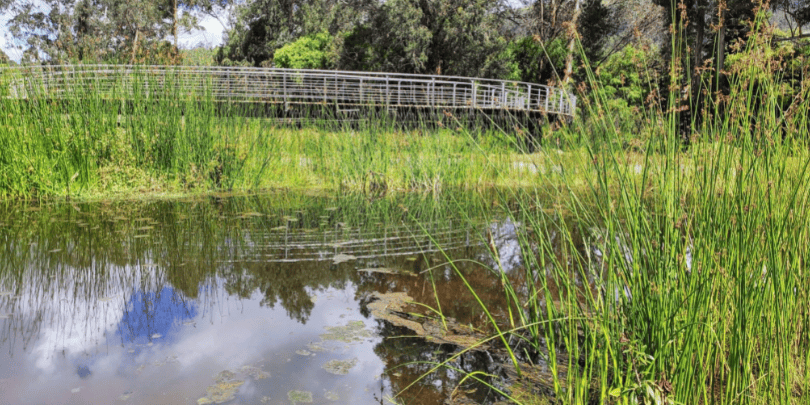
Visitors have the opportunity of seeing some 8,000 species of plants of the forests, moors, and wetlands. It is a living educational campus for students and teachers of nearby University of Azuay.
A local environmental engineer told the media that the botanical garden is important for the conservation of plant and amphibian species. With the afforestation (the establishment of a forest or stand of trees in an area where there was no previous tree cover), the return of native birds and endemic fauna is expected. This will enrich the research by the university students.
The City of Cuenca knows it has great potential to be a crown jewel of the city, so it has installed numerous LED streetlights for safety. Even at dusk and at night, one can walk in this part of La Isla, enjoying the beauty of the two rivers and the gardens.
The Simón Bolívar Connection
Though way on the south side of Cuenca, the Yanuncay had some historical significance because of Simón Bolívar. Anthony McFarlane, a professor at England’s Warwick University said Bolívar was the “most significant figure” to emerge from Latin America and was even “more important than President George Washington.“
He fought 447 battles, being defeated just six times. He rode 123,000 kilometers / 76,430 miles, traveled 10 times more than Anibal, three times more than Napoleon and twice as much as Alexander the Great. Bolívar defeated the most powerful empire of his time, winning freedom for five nations, including Colombia.
The Great Liberator visited the Cuenca area in September 1822. He was invited to stay at the Chaguarchimbana estate, which is basically at Ave. 24 de Mayo and Calle Gapal, next to the Yanuncay River.
The owner of the estate was a staunch supporter of independence from Spain, so she invited Bolívar to stay in her home. The goal was for him to formulate liberation plans for what is now Ecuador as well as a huge portion of Latin America.
That adobe building no longer exists. Evidence shows it was demolished in 1937. Today, a gorgeous building is situated on the property. The City of Cuenca bought the property two decades ago and created a gallery that is known as the Quinta Bolívar. It is in memory of the Great Liberator.
A library is named after Manuela Sáenz, who was an Ecuadorian politician and soldier, and hero of the battle of independence from the Spanish. She received the Peruvian order of “Knight of the Sun” in 1822, by General José de San Martín.
Quinta Bolívar’s library is home to more than 600 titles of Simón Bolívar. The books were donated by former mayor Ricardo Muñoz Chávez. Other works were inherited from Luis Cordero.
Admission is free and opening hours are Monday through Friday from 09:00 to 17:30 to view the collection of works by artists such as José Luis Alfaro, Gonzalo Arce, Jaime Quezada, Pablo Ramírez, Alexander Sucasaire, among others.
El Río Tarqui
“I would love to live like a river flows, carried by the surprise of its own unfolding.” ~John O’Donohue
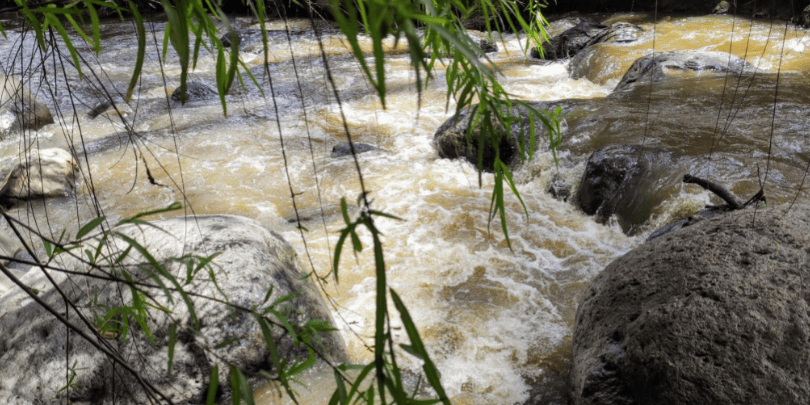
La Isla is a special neighborhood as it has two rivers running through it. According to online information, the Tarqui is the longest river at 48 km. / 30 miles in length. Formed in the Quimsacocha moor, it may be the longest in the city, but could be the smallest in size.
It flows through the southwest side of the city by the city’s largest mall and by the residences in the south side of Cuenca. Do not be surprised to see several cows grazing along the river, inside the city limits. Many times, these cows roam the grasses on the banks of the Tarqui, in La Isla. While this would probably bother many people in the States, expats consider the bovines to be a delightful ambiance to the neighborhood.
Parks as city escapes
Cuenca is full of wonderful parks. Some serve neighborhoods while other parks are for the whole city to enjoy. That includes Parque Tarqui Guzho. This lovely park is located just off of Av. Doce de Octubre and along its namesake, the Tarqui.
There are several pedestrian suspension bridges over the river. None of them swing like the Capilano Suspension Bridge in North Vancouver, British Columbia. Nor are they as high above the river. One of these pedestrian bridges takes you to a lovely cookout area. There are at least ten barbecue stations. All of them look very beautiful with their chimneys.
There are several children’s play areas. One has animals and flowers as its theme. It is a very colorful play area. Needless to say, it is a beautiful and huge park.
It is hard to guess how long it is due to the tranquil Tarqui winding its way through the park. If one had to guess, Parque Tarqui Guzho is about seven blocks long. Its width varies due to the twist and turns of El Río Tarqui.
It is a great place to spend a good amount of time to escape the noises of the city. If you time it right, it will only be you, the bees, and the birds. That is a bit of an exaggeration as there will probably be some other people who have the same idea about escaping the city while still being in the city.
May 2021 Flood
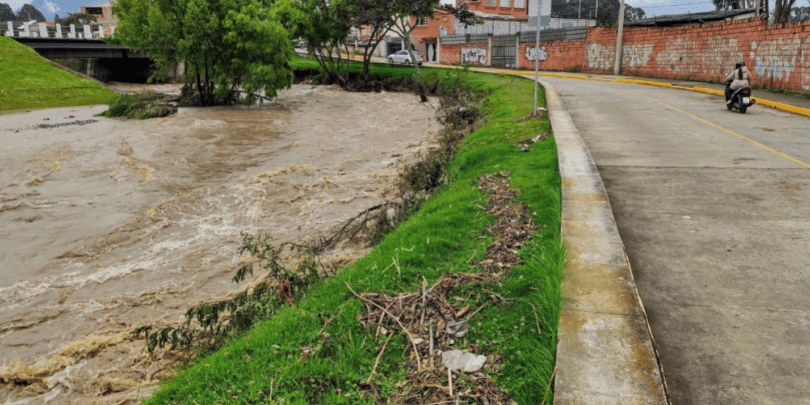
Do not let looks deceive you about the little ol’ Tarqui. Like all of the other rivers in the city, it goes up and down quickly with the amount of rain Cuenca gets. In May 2021, a freak weather incident had rain coming down hard for days at its headwaters. None of the other rivers in Cuenca got the deluge of rain.
Statistics show the Tarqui’s headwaters get the least amount of rain of the city’s four rivers. But that May, the Tarqui became an angry river. At its height, ETAPA (Empresa de Telecomunicaciones, Agua Potable, Alcantarillado) said the flow of the Tarqui was 328.4 cubic meters per second. It shattered, destroyed the old record which was 200.44 cubic meters per second on July 1, 2010.
The insane amount of water going down the river 15 months ago was 328,400 liters / 86,754 gallons flowing by La Isla every second. A 12-by-24-foot rectangular pool with an average depth of 5 feet will hold approximately 10,800 gallons of water. A 16-by-32-foot pool with the same depth will hold about 19,200 gallons, and a 20-by-40-foot pool will hold 30,000 gallons.
More amazing than shattering its old record of 220 cubic meters per second is that the Tarqui River did very little damage. Despite the extreme amount of water, the river was still a few inches from reaching La Isla’s neighborhood street, Paseo Río Tarqui. No one in Cuenca was flooded out of their homes.
Residents Push to Preserve High Water Quality
The struggle to defend the quality of water in Cuenca has been going on for decades. Initially, it was only the indigenous communities battling to preserve the pristine water, but eventually towns and cities joined in. There is great concern that this water source will be contaminated by mining, and they will lose not only the water for human consumption but also for agriculture uses.
Most residents of Cuenca are against mining operations at the city’s headwaters. In April 2021, councilors Esthela Acero and Luis Verdesoto presented polling results to the National Assembly. Four out of five (80.9 percent) residents rejected mining activity in the water recharge areas of the Tarqui, Yanuncay, Tomebamba, and Machángara rivers.
Mayor Pedro Palacios told the media Azuay is proud of its water sources and rivers and wants to protect them. The mayor added, “If we could always ask the people to decide on transcendental things, the destiny of the countries would be spectacular. It is not always possible. However, being such a specific and important issue for us, and when the economic issue is in the middle, for us the issue is clear: water is life.”
El Río Machángara
“A river is water in its loveliest form, rivers have life and sound and movement and infinity of variation, rivers are veins of the earth through which the lifeblood returns to the heart.” ~Roderick Haig-Brown
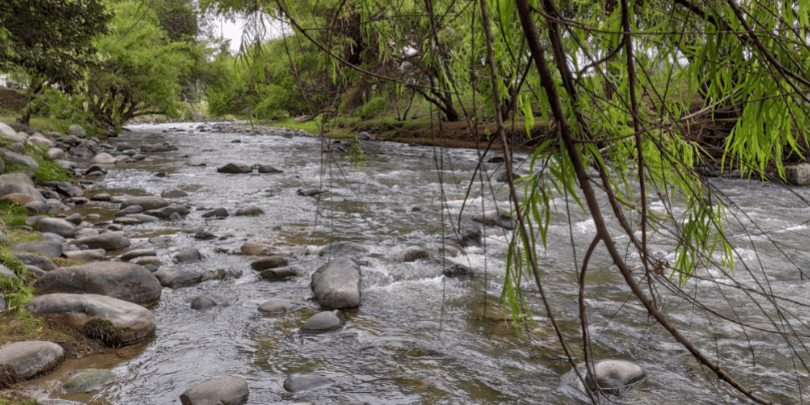
The Machángara River is way on the northeast side of the city. It is a four-dollar cab ride from the south side of Cuenca. To give you an idea of that fare and distance, one can get across the city for usually three bucks.
It is not the longest river as El Río Machángara is only about 40 km. / 25 miles long. Just north of Cuenca, in the mountains of Cañar province, the river is fed by an underground spring stemming from a year-round wet peat land. It flows southward by the east side of Cuenca. Just beyond the bridge for Panamericana Norte, the river merges with the Tomebamba.
The Machángara river basin is divided into three main sections: the lower, middle, and upper basin. These parts are divided according to natural borders, such as the upper basin that is moorland. The lower basin is an urbanized area (Cuenca).
Under ETAPA Control
A 2016 study by the Public Administration and Policy group at Wageningen University said, “The Machángara river has long been controlled to such an extent that the natural river remains a mere stream.” The Dutch university study added that ETAPA “bears sole responsibility” for this as the river is a source of water for Cuenca.
Like every other river in Cuenca, it is easy to get beautiful photos of the Machángara River. Though in the city, a grove of Willow trees near Calle De la Bandera Nacional made for a mini forest along the river. Along the riverbanks, ferns are happily growing, accentuating the beauty of the river. It makes you feel at ease, free of stress, on this part of the river.
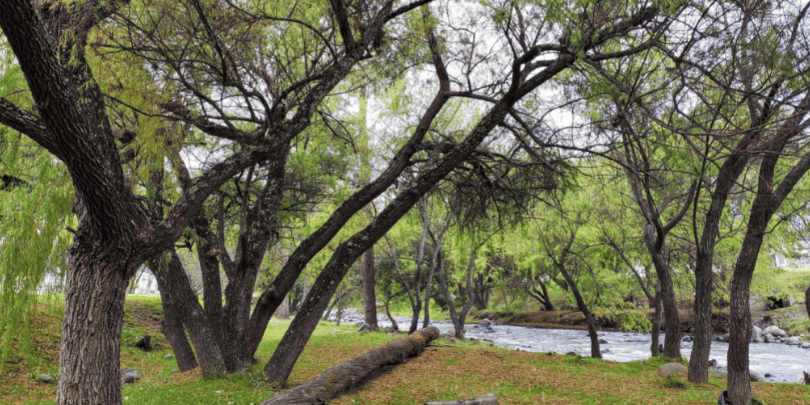
Hop Factory Brewpub
Just across the street at De la Bandera Nacional and Calle del Himno Nacional is a quaint nanobrewery. The Hop Factory was founded by T.J. and Lisa Mauk, Luis Aguayza, and Diana Amya in September 2019.
One of the brewery’s owners said the huge fallen log under the Willow trees is where he and his son like to sit to take in the river’s beauty. When the river is low from little rain, it exposes numerous boulders at that log. All of the boulders give the river a totally different look.
The Hop Factory has four core beers. T.J., who hailed from Fredericksburg, Virginia, said the beers are divided by colors. A light colored beer is his pale ale; the red is an American amber ale, and the dark beer is a stout. His fourth core beer is an IPA (India Pale Ale). The four core beers are always in bottles.
The small brewery is a great place to hang out on Thursdays and Fridays from 3 p.m. to 8 p.m. Microbreweries are becoming the new place for community social gatherings. T.J. said, “It is all about the experience, and not getting drunk. People who drink craft beers are good people. They are not gathering to get wasted, but to be with other people and have good beers.”
When you visit the Machángara River, make it a “two-fer.” Enjoy the beautiful Machángara River, followed by some very good craft beers and camaraderie at The Hop Factory.
Do Cuenca’s Rivers Whisper to You?
“The river has great wisdom and whispers its secrets to the hearts of men.” ~Mark Twain
Rivers add interest to any landscape. And watching any of Cuenca’s 4 rivers, whether it’s rushing or just slowly going by, is one of nature’s ways to relax you. Walking along their greenspaces and linear parks with their fantastic views is also great exercise.
I trust you will find some of the details which I provided helpful in enjoying their sights and sounds. Most likely, you will hear the rivers whispering and speaking to you.
People have profound thoughts and feelings associated with Cuenca’s rivers. If you have a favorite Cuenca river story or comment, please share it below for others to appreciate.
Cuenca River Tours
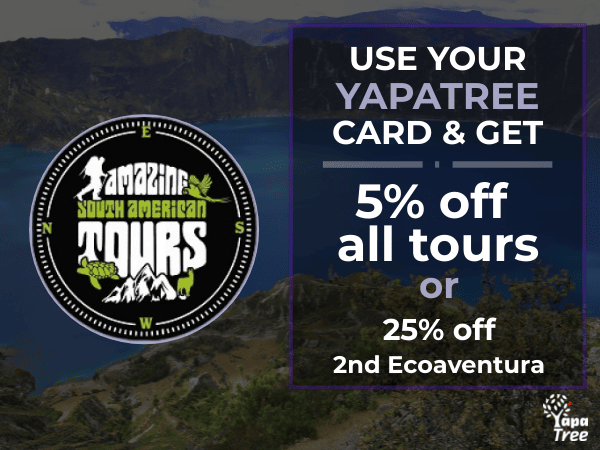
Prefer to have an experienced, licenced guide to show your the beauty of Cuenca’s rivers? Take a customized River Tour with Amazing South American Tours. Contact them by completing the form below & they’ll be in contact within 24 hours. YapaTree discount card members get 5% all tours.
===
Photos by Stephen Vargha
Stephen Vargha’s new book about Cuenca, “Una Nueva Vida – A New Life” is available at Amazon in digital and paperback formats.

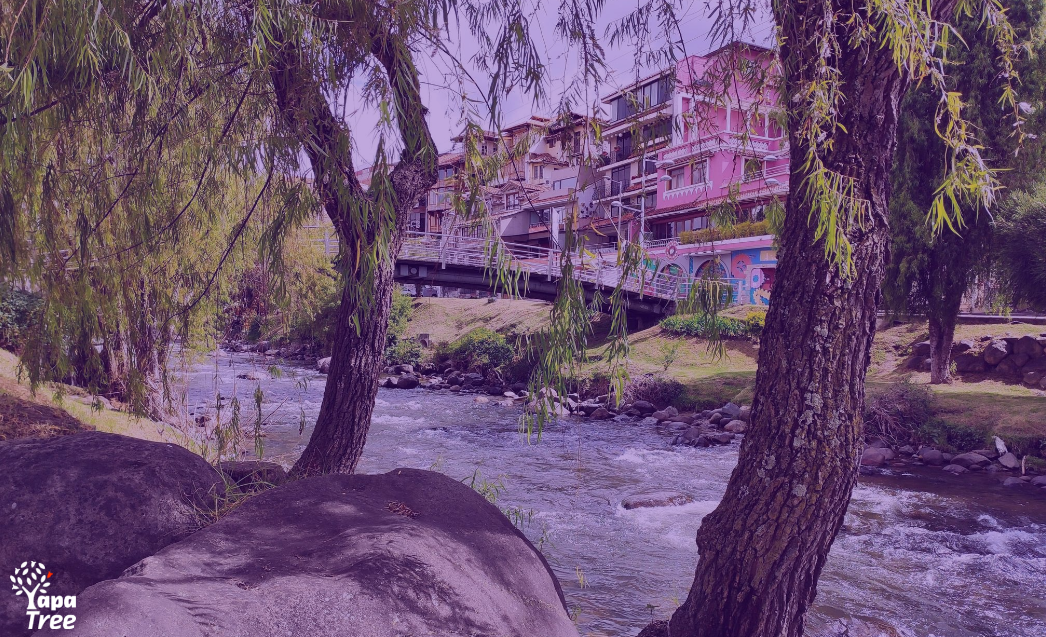



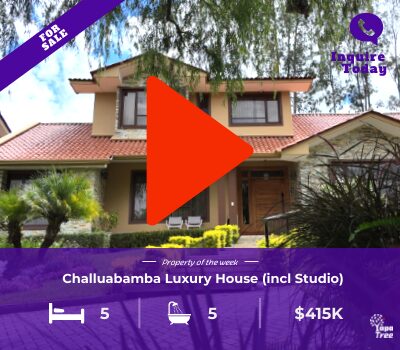
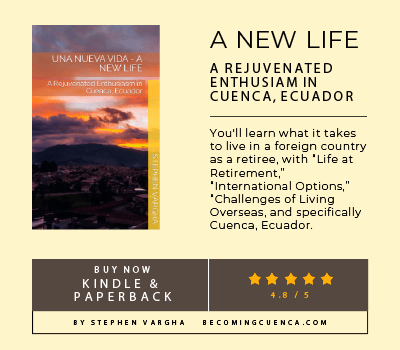




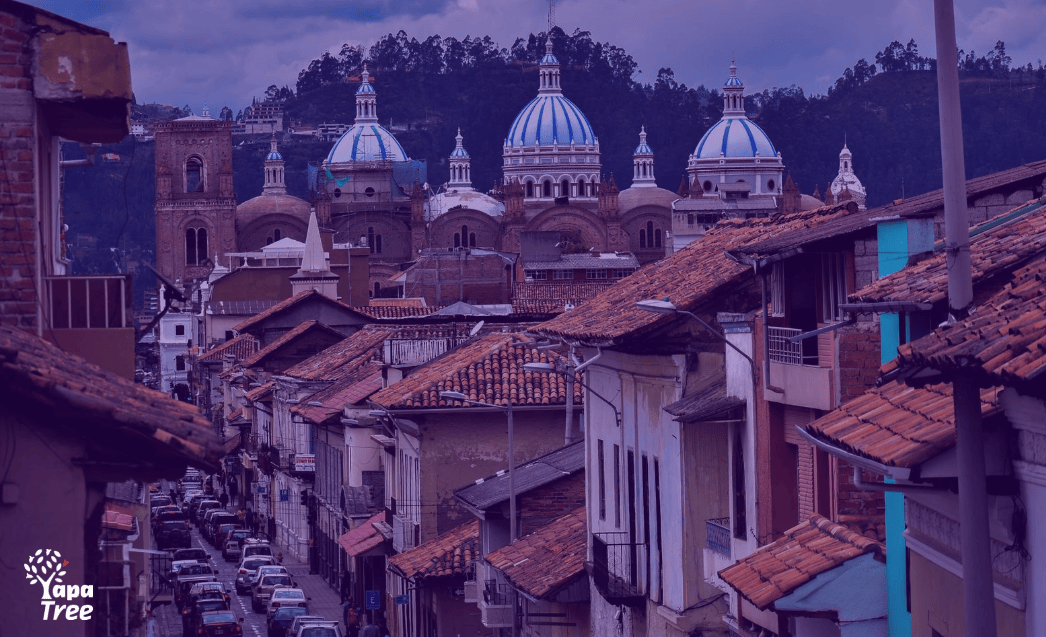
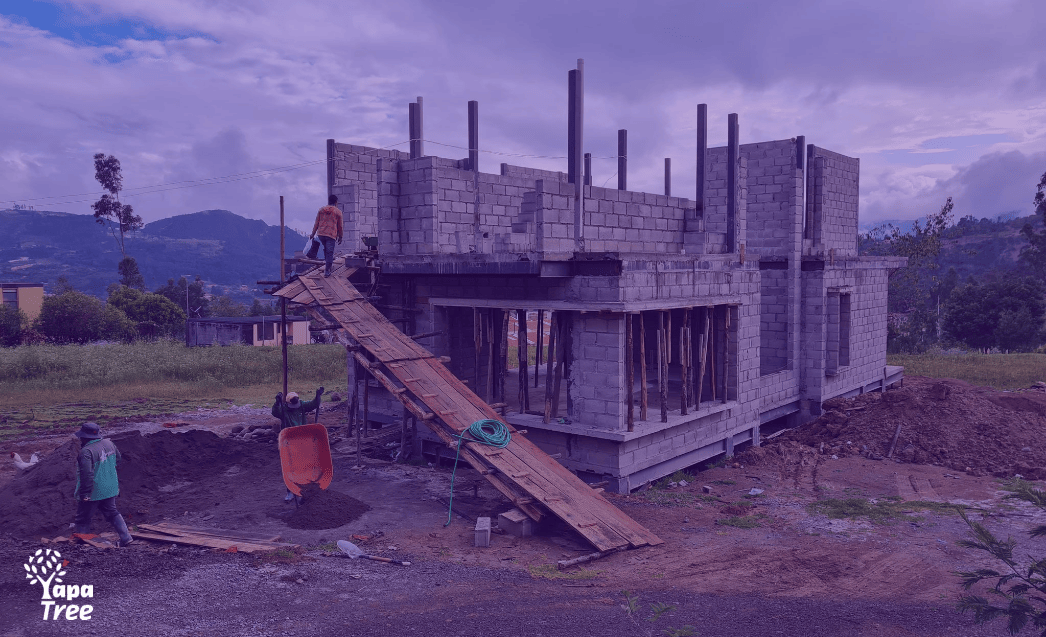



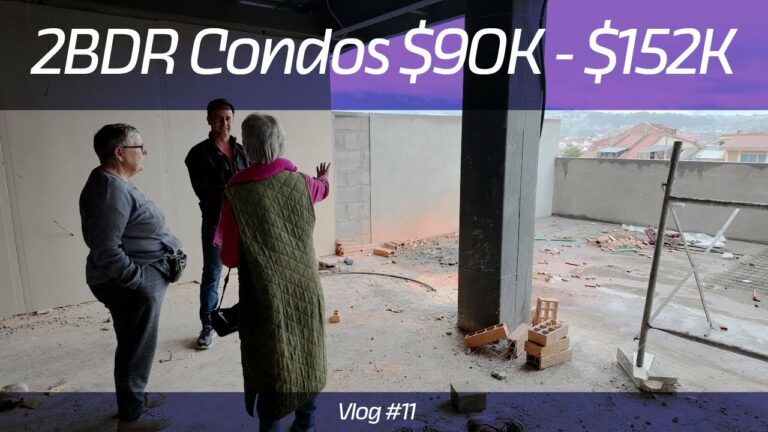



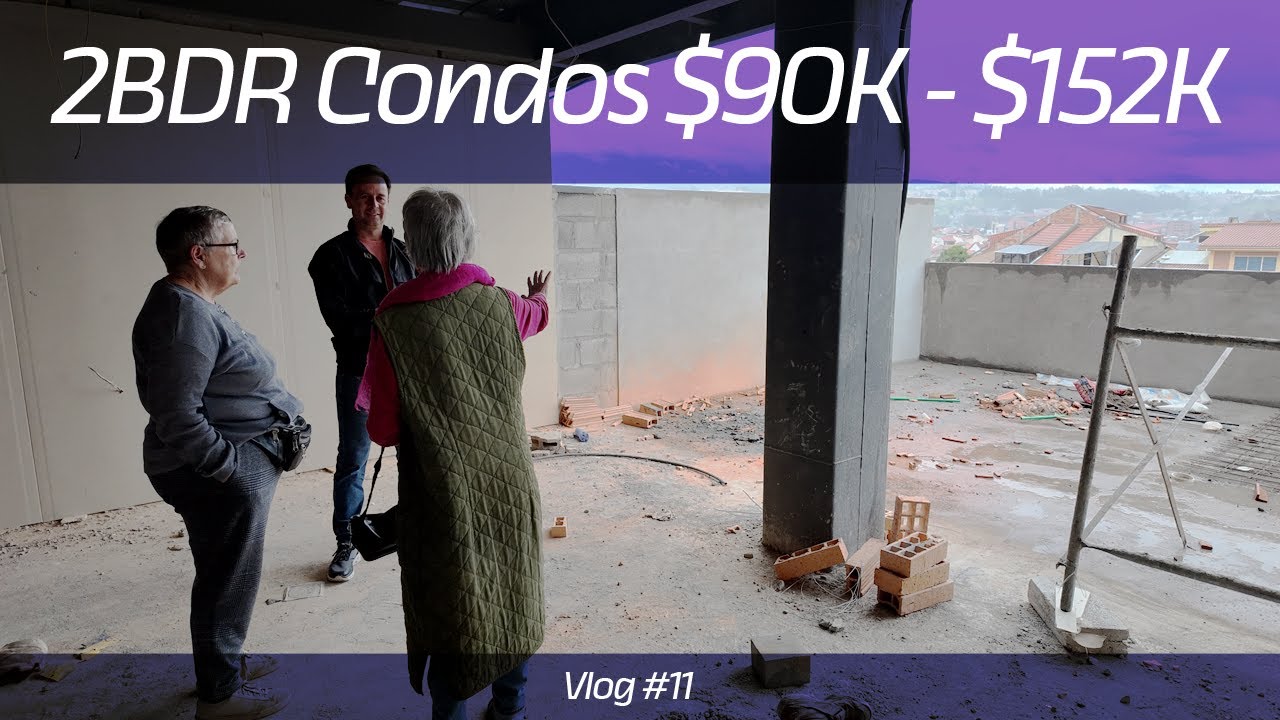
One Response
Stephen,
This article is well written, extremely informative and shows exhaustive research.
Thank you for your effort.